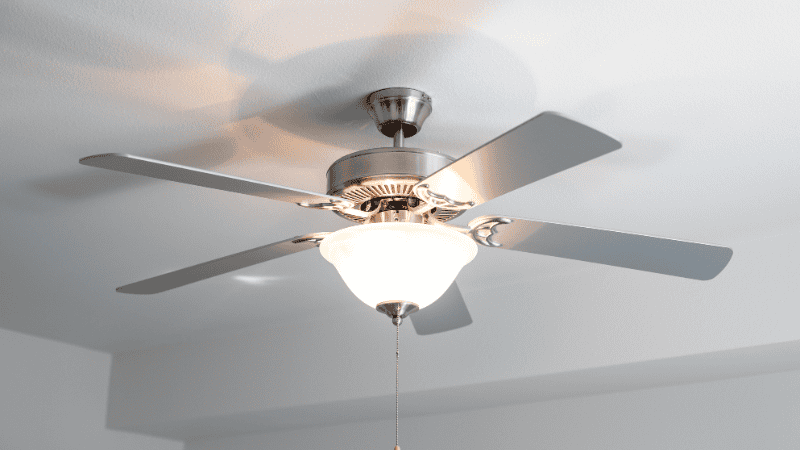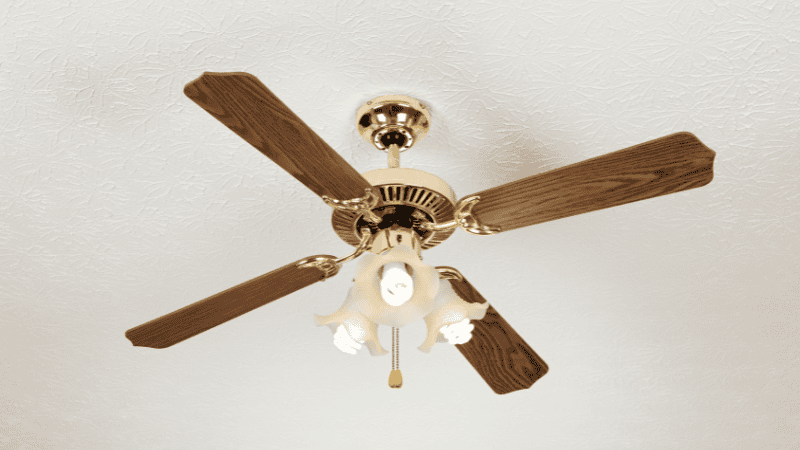If you are looking wholesale lighting solutions, click here.

In this blog post, we are going to share EXACTLY what size ceiling fan you need with a simple guide.
With years of experience in providing top-notch fan solutions for various projects, we know the perfect size for any space. If you are on your way to finding the ideal ceiling fan to boost the comfort of your space, then this blog post is best for you.

A ceiling fan is an essential fixture in a modern house. It is an efficient way to regulate the temperature of any place. Besides their functionality, ceiling fans enhance the aesthetic appeal of your space. A stylish fan can boost the decor of your home, making it more pleasing.
Picking the accurate ceiling fan size is crucial as it affects its operations. Having a too-small or too-large fan impacts its performance and appearance. Selecting the right fan size is daunting due to the availability of a wide range of various ceiling fan sizes.
The following are the right-size ceiling fans for various room sizes:
| Size of Ceiling Fan | Room Size |
|---|---|
| 29 inches or less | 50 square feet or less |
| 36 to 42 inches | 76 to 144 square feet |
| 44 to 50 inches | 144 to 225 square feet |
| 52 to 56 inches | 225 to 400 square feet |
| Over 56 inches | Larger than 400 square feet |
This size category of ceiling fans is meant for small spaces. They are manufactured to circulate air in spaces 50 square feet or less. You can install them in small hallways, bathrooms, or porches.
Ceiling fans within this size category are designed for medium-sized spaces. These are meant for spaces that range from 76 to 144 square feet. You can fit them in your medium bathroom, children’s room, small bedrooms, or home offices.
Manufacturers make most ceiling fans in a size range of 44 to 50 inches. You can have a huge range of style options. It allows you the freedom to pick your desired style and functionalities.
This size range is best for areas that are from 144 to 225 square feet. This size category works best for large bathrooms, medium living rooms, large bedrooms, and kitchens.
Ceiling fans that have a size between 50 to 54 inches work best for spaces that have a size between 225 to 400 square feet. With such a large-sized ceiling fan, installation becomes difficult.

You need to focus on the installation process to prevent wobbling and other issues. Install them by opening your ceiling. It will provide stability to their large structure while rotating.
You can install them in large living rooms, cathedral-ceiling rooms, exercise areas, and spaces with high ceilings.
If you have a vast space that is larger than 400 square feet, ordinary ceiling fans might not be sufficient for you.
You should go with a fan that has a blade diameter of over 60 inches. You can install such super-size fans in commercial spaces, huge gym areas, outdoor spaces, and restaurants.
Selecting the perfect ceiling fan size is a vital decision. However, it requires careful consideration. The following factors can guide you to choose an ideal fan size for your space:
The height of your ceiling can affect the operations of your ceiling fan, making it a considerable factor. It would be best if you also considered the downrod length to keep the airflow in the space.
| Ceiling Height | Height of Ceiling Fan’s Downrod |
|---|---|
| 9 feet | 12 inch |
| 10 feet | 18 inch |
| 11 feet | 24 inch |
| 12 feet | 36 inch |
| 13 feet | 48 inch |
| 14 feet | 60 inch |
| 15 feet and more | 72 inch |
If your room is 8 feet high, you need a ceiling fan with a standard downrod length.
For 9-foot high ceilings, a ceiling fan with a 12-inch long downrod is suitable.
If your ceiling is 10 feet high, a ceiling fan with an 18-inch long downrod is best.
For a ceiling 11 feet high, you should get a ceiling fan with a 24-inch long downrod.
For a 13-foot high ceiling, a ceiling fan with a 48-inch long downrod is required.
If your ceiling is 14 feet high, you need a ceiling fan with a 60-inch long downrod.
If your room ceiling is 15 inches or more in height, you should install a ceiling fan with a 72-inch long downrod.

The shape of a room influences air circulation. It allows efficient air circulation in the room.
For a room of 5 by 10 feet, your ceiling fan blade diameter should be 29 inches. If you have a square-shaped room with a size of 10 by 10 feet, you should go with a ceiling fan of 42 inches.
For rectangular rooms, a single fan might not offer sufficient airflow. You can install more than one fan to balance the airflow.
Fan blade pitch is the angle of the blades relative to the fan body. It plays a crucial role in airflow effectiveness.
Having a low blade angle reduces the efficiency of the fan in distributing the air—a large blade angle. In contrast, if the blade angle is too large, the air resistance might get too high to burn the motor.
Low blade pitch, between 10 to 12 degrees, is suitable for small rooms and low ceilings. It provides gentle air circulation, sufficient for small spaces. A blade pitch of 12 to 14 degrees is effective for most of the rooms. It offers substantial airflow.

Here are the steps you need to follow to determine the dimensions of your space:

Choosing the right fan size is necessary to maintain effective air circulation in a room.
The following tips can help you install the right size of ceiling fan in your room:
How do I know what size ceiling fan to buy?
To pick the right ceiling fan size, you need to measure the dimensions of your space. Measure the length and width of the room.
Multiply them to calculate the square footage. Also, measure the height of the room. This will give you the dimensions of the room.
What is the ideal height for installing a ceiling fan?

For accurately installing a ceiling fan, your ceiling should be at least 7 feet high. Maintaining this height promotes effective air circulation in the room.
Can I use a large fan in a small room?
No, a large fan is not suitable for a small room. If the ceiling fan is too big for the room, it can lead to excessive airflow, making the room feel drafty and uncomfortable.
It may also create noise and cause the fan to wobble or operate inefficiently. Additionally, a fan that’s too large may not fit well with the room’s aesthetics or lead to wasted energy.
In conclusion, selecting the accurate ceiling fan size for your space is crucial to maintaining effective air circulation. It also helps establish an aesthetically pleasing outlook. Knowing the dimensions of your space is also necessary to determine the suitable size of the fan.
Pay attention to the blade pitch and room shape. In addition, you need to maintain an adequate distance between the ceiling fan and the wall. The size of the ceiling fan affects the installation process.
Large ceiling fans often require more stability and are hard to install. If you are not experienced, hire a professional to install your ceiling fan.
Risun offers you various ceiling fan sizes to meet all your needs. Its expert team can guide you about the best fan for your space. Contact us today and pick the right-sized ceiling fan to make your space more comfy.
Comprehensive Lighting Solutions for MRO Wholesalers and Professionals
send your inquiry
Hi, I'm the author of this post, and I have been in this field for more than 15 years. If you want to wholesale lighting fixtures or lighting related product, feel free to ask me any questions.
Learn More >>Download our catalog to view all of our lighting products.
Ready to get started ?
Send Your InquiryOur team will get back to you promptly

please
download
Get notified about new products
Our team will get back to you promptly!
Add your first comment to this post